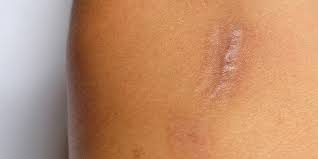Keloid scars can be more than just a cosmetic concern; they can also be painful and emotionally distressing for those who have them. In this comprehensive guide, we'll explore the various aspects of addressing the pain associated with keloid scars, from understanding keloid scar causes to exploring effective treatment options.
What are Keloid Scars?
Keloid scars are a type of raised scar that forms when the body overproduces collagen during the healing process. Unlike normal scars that gradually fade over time, keloids extend beyond the original wound site and can be firm, itchy, and painful. They can develop anywhere on the body but are most common on the chest, back, shoulders, and earlobes.
Understanding the Pain
The pain associated with keloid scars can vary from person to person. Some individuals may experience constant discomfort, while others may only feel pain when the keloid is touched or rubbed against clothing. The pain can range from mild to severe and may be accompanied by other symptoms such as itching, tenderness, and inflammation.
Causes of Keloid Scar Pain
Several factors can contribute to the pain associated with keloid scars. These include:
Excessive Tension
Keloids often form in areas of the body where there is increased tension, such as the chest or shoulders. The constant pulling and stretching of the skin can lead to discomfort and pain.
Nerve Damage
In some cases, keloid scars can compress nearby nerves, leading to pain, tingling, or numbness in the affected area.
Inflammation
Keloids are characterized by inflammation, which can exacerbate pain and discomfort. Inflammation can also contribute to itching and tenderness.
Treatment Options
While keloid scars can be challenging to treat, several options are available to help alleviate pain and discomfort:
Corticosteroid Injections
Corticosteroid injections are commonly used to reduce inflammation and relieve pain associated with keloid scars. These injections are typically administered directly into the keloid by a healthcare professional.
Silicone Gel or Sheets
Silicone gel or sheets can help flatten and soften keloid scars, reducing pain and discomfort. These products are applied directly to the skin and are often used in conjunction with other treatments.
Cryotherapy
Cryotherapy involves freezing the keloid with liquid nitrogen to reduce its size and alleviate pain. This procedure is usually performed in a dermatologist's office and may require multiple sessions for optimal results.
Laser Therapy
Laser therapy can help reduce pain and inflammation associated with keloid scars by targeting the blood vessels that feed them. This treatment is non-invasive and can be performed on an outpatient basis.
Surgical Excision
In severe cases, surgical excision may be necessary to remove the keloid and relieve pain. However, this option carries a risk of recurrence and should be carefully considered.
Conclusion
Addressing the pain associated with keloid scars requires a comprehensive approach that addresses the underlying causes while providing symptomatic relief. By understanding the factors contributing to keloid scar pain and exploring effective treatment options, individuals can take proactive steps towards managing their condition and improving their quality of life. If you're struggling with keloid scar pain, don't hesitate to consult with a healthcare professional to explore the best course of action for your unique needs.





Comments